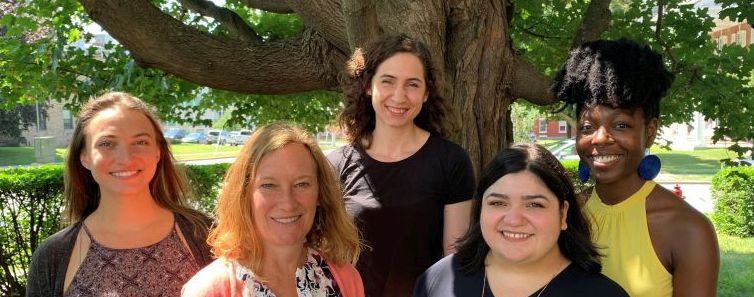It's not all in your head. Our team led by Dr. Kelly Rohan offers help for this seasonal disorder.

The Winter Blues
In the winter do you:
- want to hibernate?
- feel fatigued and down?
- change your sleeping and eating habits?
- feel sad or blue?
- lose interest in things?
Treatment for SAD - Light Therapy
We strongly recommend against self-diagnosis and self-treatment. Instead, you are encouraged to seek evaluation by a qualified professional for the problem you are experiencing. If you decide to pursue light therapy, it is strongly recommended that you do so under the supervision of a qualified professional because of the possibility of side effects and because light therapy can affect your sleep.
Bright Light therapy has been an effective treatment for many people. A light box device has been designed specifically for use in treating Seasonal Affective Disorder. Although many different products are available, we recommend that you purchase a standard-size (as opposed to a smaller desk unit) light box that gives off 10,000-lux of cool white fluorescent or full spectrum light with a built-in screen to filter out harmful ultraviolet (UV) rays. Light therapy units with these qualities are the most widely tested in clinical trials for SAD.
Treatment for SAD - Cognitive Behavioral Therapy
Cognitive-behavioral therapy is an effective, non-drug treatment for depression. Cognitive-behavioral therapy is a tried-and-true treatment for depression. Our preliminary studies show that cognitive-behavioral therapy is a promising new treatment for SAD.
Based on 3 decades of research, all of the following statements are true of cognitive-behavioral therapy:
• Cognitive-behavioral therapy has been effective in treating community volunteers, adult outpatients, and elderly people with depression.
• Cognitive-behavioral therapy has been effective in treating both mild and more severe depression.
• Most comparisons have shown cognitive-behavioral therapy to be as effective as medications in treating depression.
• Cognitive-behavioral therapy has no physical side effects.
• Cognitive-behavioral therapy may prevent or help delay relapse (or return) of depressive symptoms in the future better than other forms of treatment for depression.
• Preliminary studies in our group suggest that cognitive-behavioral therapy may be as effective as light therapy in treating SAD.
Facts about SAD
• SAD was discovered before 1845, but was not officially named until the early 1980’s.
• Over 100 articles have been written on the subject since-1999.
• As many as 6 of every 100 people in the United States may have SAD.
• Sad is more common in northern geographic regions, like New England.
• SAD is more common in women than in men.
• The most difficult months for SAD sufferers are January and February.
• SAD symptoms can include the following: fatigue, weight and appetite changes, oversleeping,
loss of interest in hobbies and social activities, difficulty concentrating, and low mood.
• Light therapy has been very effective in reducing or eliminating the symptoms of SAD.
SAD Study Contact Info
University of Vermont
Department of Psychology
2 Colchester Avenue
Burlington, Vermont 05405
Telephone: 802-656-9890
email: sadstudy@uvm.edu
- Washington Post - Fall is the best time to prepare for winter seasonal depression
- Sad in the summer? You may have summer seasonal depression. - Washington Post
- Feeling Sad? 3 Ways to Fight Seasonal Depression - AARP
- COVID Pandemic Could Worsen Seasonal Affective Disorder - New York Daily News
- Washington Post - Seasonal affective disorder can last for months. Here are the signs.
- Across the Fence - Research on SAD
- The Double Whammy of Seasonal Affective Disorder in a Season of COVID - The New York Times
- Tips for maintaining a healthy body and mind during the coronavirus pandemic - WCAX.com
- Vermont Public Radio guest on Vermont Edition 12/07/2022:
- NBC Universal interview on 12/07/2022
- New York Times interview for an article, “What to know about seasonal depression” by Hannah Seo on October 21, 2022
- Wall Street Journal - How to hang on to Summer Vibes...



